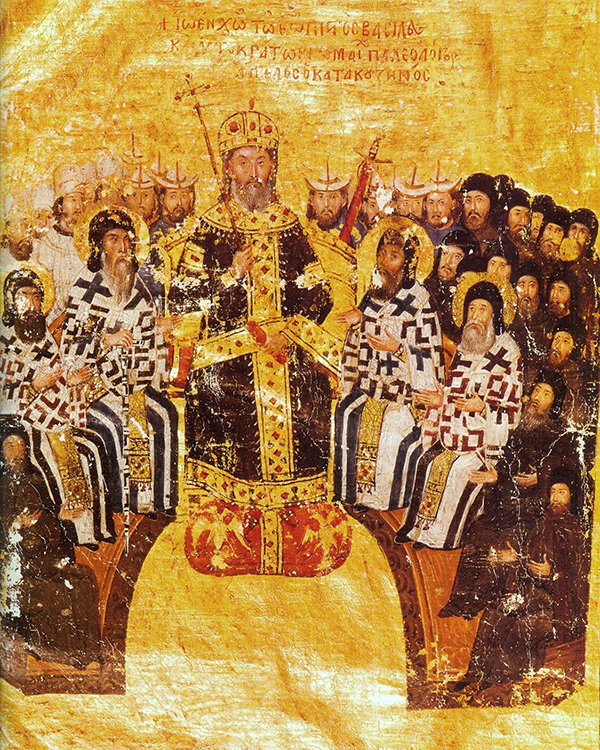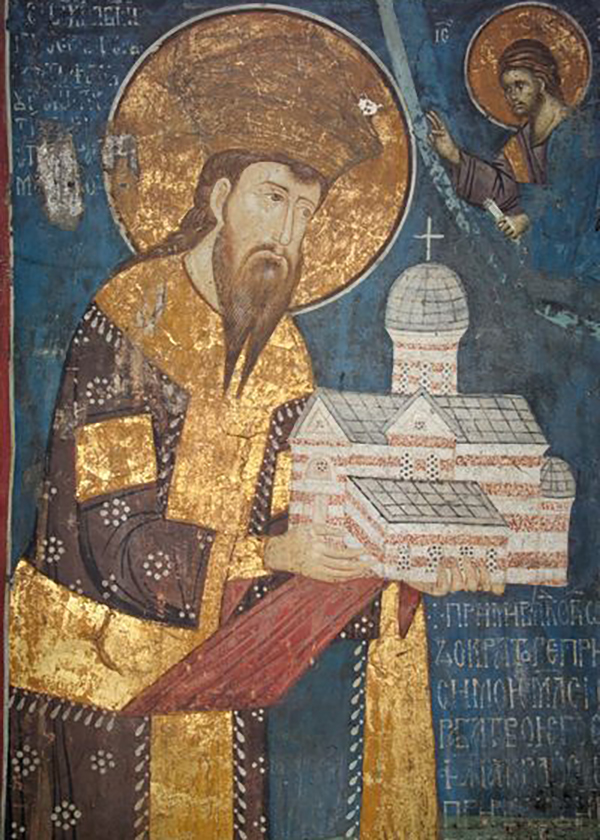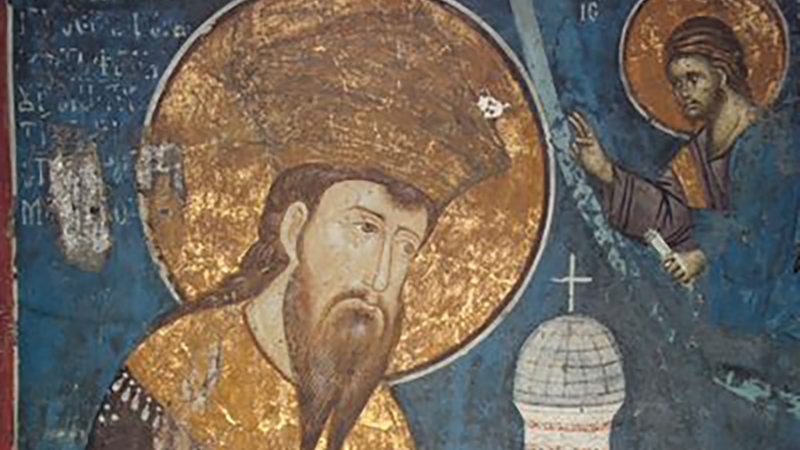James Cogbill
With notable exceptions, studies of the political culture of the Byzantine Empire during the early Palaiologan period (c. 1258-1341) tend to privilege the actions and decisions of the emperor in the political arena, reducing episodes involving other actors to intriguing but ultimately inconsequential anecdotes which can be quickly passed over. This is, in part, the result of modern research reproducing the character hierarchies of our most important surviving sources, the long narrative histories in which the emperor is invariably both the main character and the ‘organizing principle’.1 The span of his life determines the length and structure of these works, and the events through which he lived dominate the narrative content. The emperor is the individual most often shown performing political action, and it is his personality and interests that history-writers sought to record and hang the successes and failures of the empire upon.

This privileging of emperors is exacerbated by the relative lack of research focused on the ways in which they interacted with other elites in this period. For example, the early Palaiologan aristocracy – a poorly defined, porous and on occasion quasi-meritocratic group of court officeholders, senior bureaucrats, military commanders and members of wealthy and distinguished families – are often seen either as representatives of the emperor who lacked agency of their own, or as malcontents who destabilised the empire through rebellion and conspiracy in pursuit of their own selfish ends. Beyond their clear interest in status competition – evidenced by, for example, precedence disputes and large-scale monastic patronage – we know relatively little about these individuals and their perceptions of their own positions and functions within the empire. This lacuna stands in obvious contrast to the wealth of evidence we have for the theorised ideal behaviour of emperors.
Despite the centrality of emperors within them, the three fourteenth-century histories dealing with the early Palaiologan period do provide substantial information about other individuals engaged in political action, most notably members of the aristocracy. Focusing here on a single case study from the History of John VI Kantakouzenos, I want to suggest that the author – a prominent aristocrat and imperial kinsman who usurped the throne during the minority of John V Palaiologos – constructed his narrative to draw attention to the need for the early Palaiologan aristocracy to be actively involved in the governance of the empire.
In 1321, interpersonal problems and wider political tensions erupted into a civil war between the emperor Andronikos II Palaiologos and his grandson and co-emperor Andronikos III. After seven years of sporadic violence and uneasy peaces, the elder Andronikos was deposed and the younger emperor ruled alone until his death in 1341. During the final months of the war, several leading supporters of Andronikos II – relatives of the emperor and other members of the aristocracy – fled to Serbia and urged its king, Stefan Uroš III Dečanski, to provide them with additional troops with which to continue fighting the younger emperor. Although Dečanski had earlier supported the elder emperor, he refused to provide any further military assistance. According to Kantakouzenos, Dečanski declared that he regretted becoming involved in the Byzantine civil war ‘without just cause’ and would henceforth not attack either emperor unless a wrong was committed against him.2

In the face of the persistence of these ‘fugitives’, a group of Serbian aristocrats also castigated them for having previously been ‘eager to stir up war in every possible way’. Instead, they said that the fugitives should have sought to reconcile the two emperors and thereby secure peace for themselves and their countrymen. This would, the Serbians continued, have been ‘advantageous for the emperors, yourselves and the common good of the Romans’. They also advised their king not to wage war against the Byzantines and thereby commit injustice, instead warning him to keep in mind the risk of divine retribution. Indeed, should he disregard their advice, they declared that he would have to endure the war alone, without their support. Rather than be angered by these rather subversive words, Dečanski is shown in Kantakouzenos’ narrative to assert that even if there were legitimate disputes between the Byzantine and Serbian rulers, he would have refrained from war upon hearing the views of his aristocratic countrymen.
These passages function within Kantakouzenos’ History to vilify those who had fought against Andronikos III – and therefore against the author himself, Andronikos’ leading supporter – during the 1321-8 civil war. The fugitives are depicted as being intent on prolonging violence through foreign intervention, without care for the wellbeing of their homeland and fellow countrymen. As elsewhere throughout the History, invented dialogue – attributed here to the Serbians but never to the Byzantine fugitives – is employed by Kantakouzenos to justify his own actions and attack his opponents.3
However, I would suggest that Kantakouzenos is seeking to do something more here, and so constructed the passages in such a way as to convey certain political ideas. As much as these passages denigrate Kantakouzenos’ former opponents – whom, by the time of writing his History, he had fought decades previously – they also articulate a vision of how members of the Byzantine aristocracy should behave and how they should act to protect a vague and undefined ‘common good’. Through the Serbian king and aristocrats, Kantakouzenos presents the Byzantine aristocracy as having the right and, even more importantly, the duty to counsel their rulers and, if necessary, to intervene to prevent or mitigate the unjust behaviour and dangerous whims of emperors. Despite the theory of the Byzantine imperial office and the virtues that the incumbent was supposed to possess, these passages recognise that the reality might be very different. It was therefore the obligation of the aristocracy to interpose themselves for the good of the empire and its people, even withholding military service from their ruler if necessary. In such circumstances, emperors – Dečanski being briefly positioned here as a model ruler – should accept legitimate criticisms and change their behaviour accordingly.
Despite adhering to Orthodox Christianity and recognising the ecclesiastical authority of the Patriarchate of Constantinople, Serbia and Serbians were heavily othered in the Byzantine cultural mindset as uncivilised, primitive and bestial, including elsewhere in Kantakouzenos’ own History.4 By presenting them here as moral exemplars holding up an unfavourable mirror to the Byzantine fugitives, Kantakouzenos crafts distinctive and memorable passages, drawing attention to and heightening the impact of the messages conveyed to his Byzantine audience. Far from being employed mechanically, a trope such as the ‘noble barbarian’, which subverts the moral hierarchy between in-group and out-group, ‘actually serve[s] to underline the importance of what was said’.5
This episode is just one of many throughout Kantakouzenos’ History in which the author plays with ideas of the common good in order to position the early Palaiologan aristocracy as having both a right and a duty to protect the welfare of the empire and its people, even – perhaps especially – in the face of injustices and dangerous behaviour committed by emperors. All appear in lengthy, rhetorically elaborate and emotionally rich passages which draw and hold the reader’s attention, emphasising the importance of the messages being conveyed. Similar examples of the need for elite involvement appear in the fourteenth-century histories of George Pachymeres and Nikephoros Gregoras, while a treatise written by Theodore of Montferrat, a younger son of Andronikos II, advocates for a formalised imperial council and an elected assembly to rule alongside the emperor.6 I argue more broadly in my in-progress doctoral thesis that early Palaiologan governance was far more discursive than is commonly assumed, with very real and active roles for non-emperors, and the passages highlighted here provide important insight into how the aristocracy saw themselves and their role within the empire.
Footnotes
- M. Kinloch, ‘Stories of emperors, sultans, and cities: comparing protagonists in the histories of Doukas and Leonardo Bruni’, Byzantine and Modern Greek Studies, 46/2 (2022), pp. 196-213 (p. 196). ↩︎
- L. Schopen (ed.), Ioannis Cantacuzeni eximperatoris historiarum libri IV, 3 vols. (Bonn, 1828-32), vol. 1, pp. 282-4. ↩︎
- For Kantakouzenos’ use of invented dialogue, see V. Puech, ‘Les Histoires de Jean VI Cantacuzène (livres I et II)’, in P. Monnet and J.-C. Schmitt (eds.), Autobiographies souveraines (Paris, 2012), pp. 69-92. ↩︎
- A. Kaldellis, Ethnography after Antiquity: Foreign Lands and Peoples in Byzantine Literature (Philadelphia, PA, 2013), passim; S. Marjanović-Dušanić, ‘La représentation du souverain serbe dans les Histoires de Jean VI Cantacuzène’, in M.-H. Blanchet and R. Estangüi Gómez (eds.), Le monde byzantin du XIIIe au XVe siècle : anciennes ou nouvelles formes d’impérialité (Paris, 2021), pp. 133-58. ↩︎
- P. Magdalino, ‘Aspects of Twelfth-Century Byzantine Kaiserkritik‘, Speculum, 58/2 (1983), pp. 326-46 (p. 328). For ‘noble barbarians’, see E. Hall, Inventing the Barbarian: Greek Self-Definition through Tragedy (Oxford, 1989), pp. 211-23. ↩︎
- T. Shawcross, ‘”Do Thou Nothing without Counsel”: Political Assemblies and the Ideal of Good Government in the Thought of Theodore Palaeologus and Theodore Metochites’, Al-Masāq, 20/1 (2008), pp. 89-118. ↩︎

